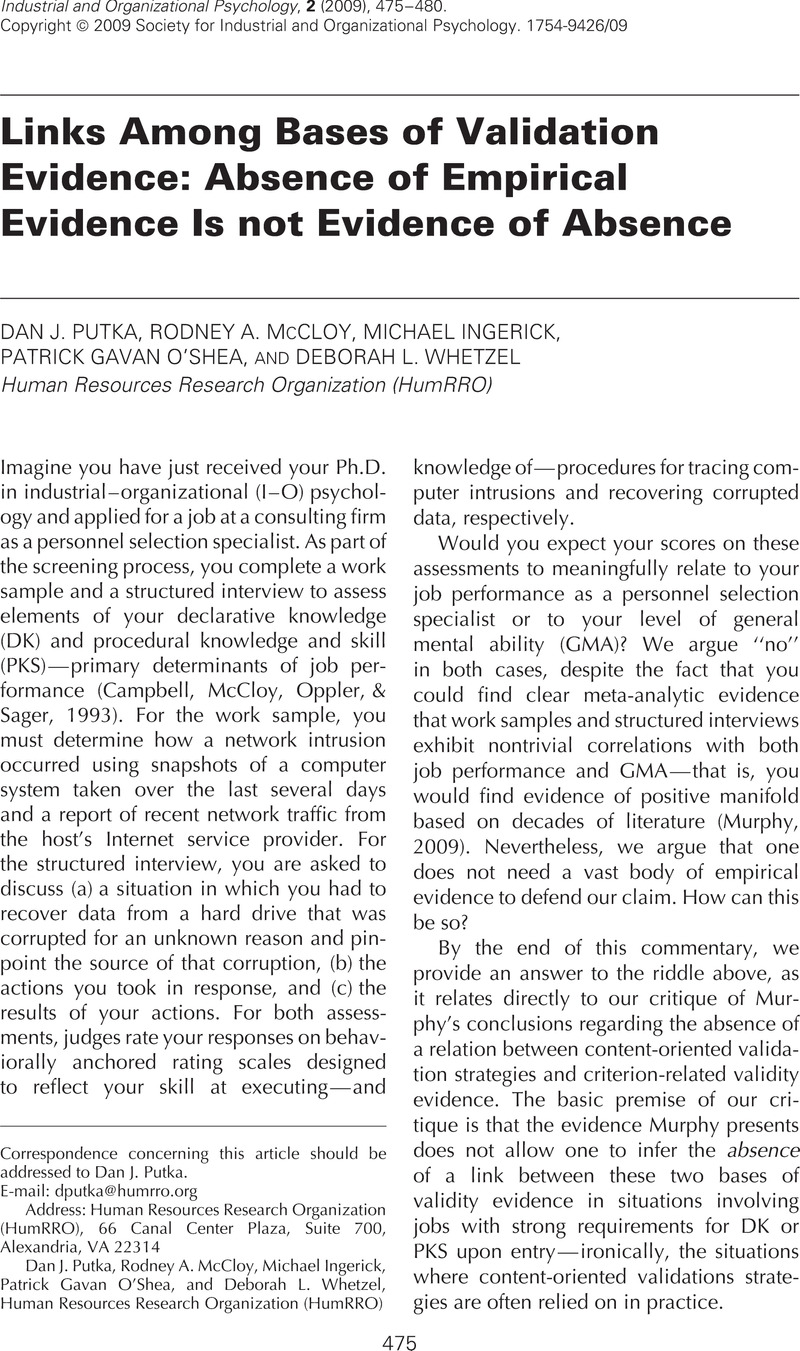Crossref Citations
This article has been cited by the following publications. This list is generated based on data provided by Crossref.
Murphy, Kevin R.
2009.
Is Content-Related Evidence Useful in Validating Selection Tests?.
Industrial and Organizational Psychology,
Vol. 2,
Issue. 4,
p.
517.
Sackett, Paul R.
Putka, Dan J.
and
McCloy, Rodney A.
2012.
The Oxford Handbook of Personnel Assessment and Selection.
p.
91.
Sackett, Paul R.
Walmsley, Philip T.
Koch, Amanda J.
Beatty, Adam S.
and
Kuncel, Nathan R.
2016.
Predictor content matters for knowledge testing: Evidence supporting content validation.
Human Performance,
Vol. 29,
Issue. 1,
p.
54.



